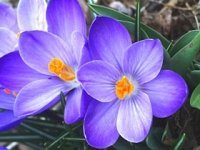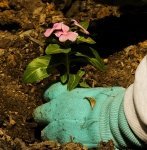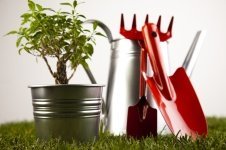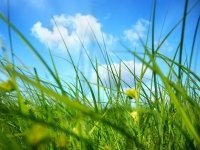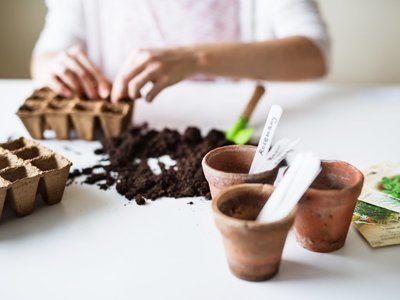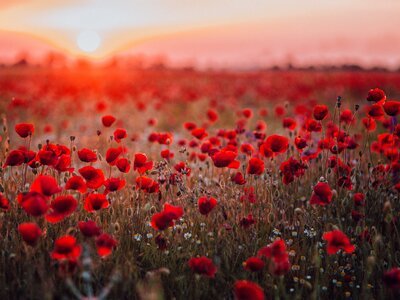Delightful Daylilies
If you don't have daylilies in your garden, you're probably in the minority. One of the most popular perennials, daylilies have earned a reputation for being hardy, reliable, adaptable, and relatively pest-free. But more importantly, they offer beautiful flowers atop attractive foliage. What's not to love?
If you've been turned off to daylilies because of the monotonous yellow-flowered varieties found in just about every highway and commercial planting, you owe it to yourself to delve further into their world. There are more than 40,000 named daylily varieties -- all hybrids from less than a dozen Hemerocallis species. Colors range from brilliant reds to subtle salmons and lavenders to luminous pale pastels -- still no blues, but not for lack of breeders' trying. There are dwarfs to flank a walkway, medium-sized varieties to anchor a bed, and tall, back-of-the-border types. In short, there's a daylily for every garden.
A Garden Escapee
You've likely seen "wild" orange daylilies along rural roads and assumed that these plants are native here. But the genus Hemerocallis originates from temperate parts of Asia and was introduced to the U.S. in the 1800s. One species, H. fulva, the tawny daylily, found the Eastern U.S. much to its liking, and has spread from old homestead gardens to inhabit disturbed areas, especially roadsides. Some native plant societies look askance at daylilies and consider them invasive. It's true that when grown in home gardens they'll multiply, but they generally do so without the exuberance of more aggressive colonizers. Because they have deep, fibrous roots, daylilies are good for stabilizing soil on steep banks -- and they don't need mowing.
What to Look For
Keep the following characteristics in mind when shopping for daylilies: bloom color, shape, and size; bloom season; plant height; and growth habit.
- Bloom appearance If possible, view a variety in bloom before purchasing. Daylilies vary widely in appearance, and what pleases one eye may offend another. Some varieties' flowers have wide, sturdy petals; others have narrower, more delicate ones. Flower size can vary from just an inch or two to up to 8 inches across. Colors range from subtle to intense, and color may vary depending on whether plants are grown in full sun or light shade. Some varieties' flowers have strongly contrasting throats or bands of color; some are all one color or have subtle shading.
- Bloom season If you plan carefully, you can have daylilies in bloom from late spring through mid fall. Most varieties have a distinct bloom period, usually lasting several weeks to a month. Some have a flush of blooms followed by sporadic blooming into fall; these are called rebloomers. Variety descriptions should indicate season of bloom.
- Plant height You've seen those orange daylily flowers towering over the masses of foliage, so keep in mind that most plant descriptions of height refer to the height of the flower stalk, rather than the height of the foliage, which may or may not be significantly shorter.
- Growth habit Daylilies can be categorized into three types: deciduous, evergreen, and semi-evergreen. Deciduous varieties die back to the ground each fall and tend to be the hardiest bunch. Evergreen types keep their foliage through winter and are less hardy. Semi-evergreens include varieties that don't fall neatly into either category, generally keeping some but not all of their foliage. We can grow all three types over much of our region, although the deciduous types may suffer in warmer areas.
Planting
Although adaptable to less-than-ideal situations, daylilies thrive in full sun and moderately rich soil. They are relatively drought tolerant, but they'll flower best if watered during dry spells. You can plant container-grown daylilies any time, but if you plant in midsummer, you'll need to be diligent in your watering. Bare-root daylilies can be planted in spring or fall.
Avoid a haphazard look by planting in groups of at least three of each variety. If you're covering a large area, plant several different varieties to avoid monotony and provide a longer bloom period.
Making Your Own
Daylilies are relatively easy to hybridize, which helps explain the abundance of named varieties. You simply transfer the male pollen from one parent plant to the female pistil of another parent plant. If pollination is successful, a seed-filled pod will form. Then you plant the ripened seed and about two years later the offspring plant will flower. Maybe you'll be the first to breed a blue-flowered daylily!
Or if the flowers on your new variety are less-than-pleasing, all is not lost. Daylillies are edible and are, in fact, cultivated as food plants in parts of Asia. The flowers, young shoots, and tubers were favorites of Euell Gibbons, notable aficionado of wild edibles. Daylily flowers can be eaten raw, battered and fried, or used in Chinese-style hot and sour soup. Now if that doesn't make daylilies the perfect perennial, I don't know what does!
Read more from the National Gardening Association

